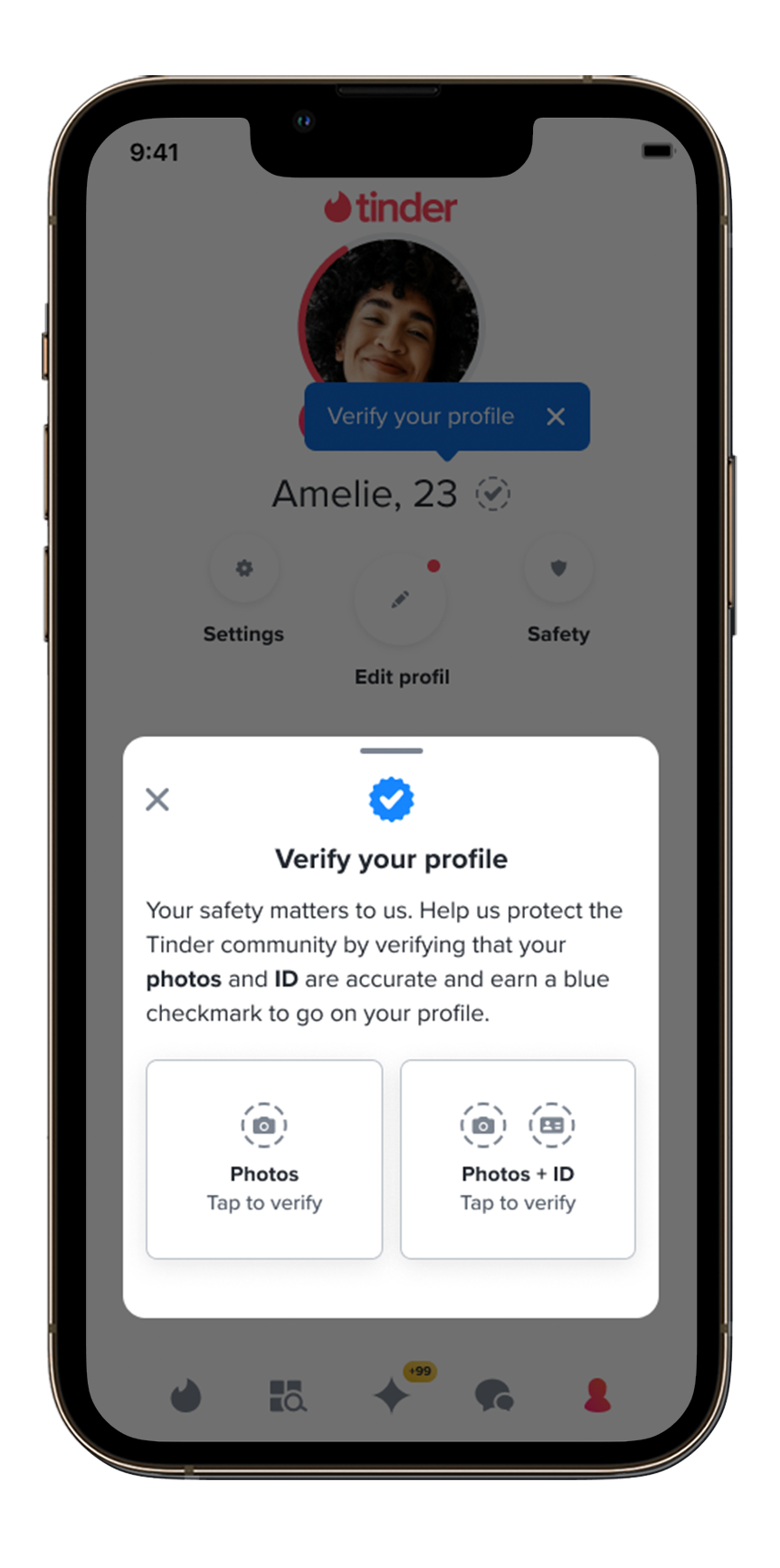In a move to enhance user safety and combat online fraud, Tinder, the world’s most popular dating app, has announced the introduction of enhanced identity checks for its users in the UK, US, Brazil, and Mexico.
This new feature, unveiled on February 20, involves a two-step verification process that requires users to match their video selfies with their government-issued photo IDs, such as passports or driving licenses.
User Verification: A Layered Approach
Tinder’s new identity verification system offers a multi-layered approach to user authentication.
Users who voluntarily opt-in to the scheme will receive distinct badges on their profiles, indicating the level of verification they have completed.

- Photo Verification: Users who verify their profile pictures by matching a video selfie to their existing photos will receive a blue camera icon badge on their profile. This badge signifies that the user’s likeness has been authenticated.

- ID Verification: Users who verify their identity by matching their video selfie to a government-issued photo ID will receive a blue ID icon badge. This badge confirms that the user’s age and identity have been verified by Tinder.
- Complete Verification: Users who complete both the photo and ID verification processes will be awarded a blue checkmark on their profile. This mark of distinction indicates that the user’s appearance, age, and identity have been thoroughly verified by Tinder.
Combating Catfishing and Fraud
The primary objective behind Tinder’s enhanced identity checks is to combat the persistent issues of catfishing and online fraud that have plagued dating apps.
Catfishing, a deceptive practice where individuals misrepresent their identity to initiate a romantic relationship, often with the intent of financial gain, has been a growing concern for users and platforms alike.
By implementing these additional verification measures, Tinder aims to provide users with greater confidence that the individuals they interact with on the app are who they claim to be.
This move is expected to enhance user trust and foster a safer, more transparent environment for online dating.
A Voluntary Scheme with Incentives
It is important to note that Tinder’s identity verification process is entirely voluntary.
Users are not required to undergo the verification process, but those who choose to do so are likely to benefit from increased credibility and a higher likelihood of successful matches.
Tinder’s data from countries where the system was introduced in 2023, such as Australia and New Zealand, indicates that verified users experienced a 67% increase in matches compared to unverified users.
This statistic suggests that users who choose to verify their identities may gain a competitive advantage in the online dating landscape.
Tinder’s Approach to User Safety
Tinder’s decision to introduce enhanced identity checks represents a proactive approach to addressing user safety concerns and fostering a more secure online dating environment.
Victim Support, a charity organization that assists victims of crime, acknowledged the move as a positive step but emphasized the need for mandatory verification across all dating apps to establish a truly robust system.
As the online dating landscape continues to evolve, platforms like Tinder recognize the importance of implementing measures that prioritize user safety and foster trust within their communities.
The introduction of enhanced identity checks is a significant stride in this direction, demonstrating Tinder’s commitment to creating a safer and more transparent space for users to connect.











